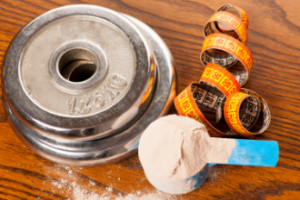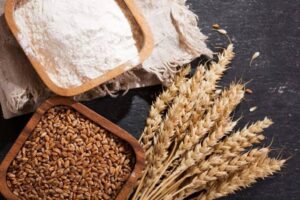Last month end I was at a place called Ganeshpuri, a small pilgrim town, touching Mumbai (the town made famous by Liz Gilbert of the Eat, Pray, Love fame). I was hosted by a couple who have recently started an organic farm there.
Kalyani (Carren) was formerly an environmental consultant and a yoga teacher in Britain, and Daniel, an artist from the U.S. They met at Ganeshpuri, got married and the rest as they say is history. Well actually, they are in the process of creating history, and I was witness to it for a few days. The couple have leased a few acres of land and are farming organically there.
As we hopped off the road and reached the Saha Astitva farm, the difference between their farm, lush and bountiful, and the barren land surrounding it, was visibly evident.
2 years ago, their piece of land too was one with the barren landscape, Kalyani informs us. The lotus ponds, the prayer pagoda, the dense banana grove, all seem to exude the same spirit that the owners have infused into this.
Kalyani brings us under a grove of trees and digs out the soil. She is delighted that the soil is soft enough to be dug out with her hand. She lights up like a child as some earthworms and insects show up and say hello, all signs of good healthy soil, thriving with life, excellent for growing anything. These insects that we can see, and the millions of microbes that the naked eye cannot are what give life to the soil, which in turn is the source of rich natural nutrition in the plants that grow on it, as opposed to soil made dead by chemical fertilizers.
If what is available in nature in its natural form can simply be looked at as its chemical composition and replaced by the man made chemical (such as nitrogen and urea), then why cant we just eat coal to survive ? After all we are made of carbon molecules, and coal is the purest form of carbon. Kalyani’s words seem to make sense and are telling of their approach and philosophy.
As we go on through the day, it is amazing the to see Kalyani and Daniel’s interaction. As a harmless water snake passes us by, in the moat created around their shelter, they actually discuss whether the snake would be happy in the moat or outside. Daniel is concerned that some of aloe vera plants have been pulled off the ground for replanting have been waiting in a bucket for sometime, and he is sure they don’t like it (meaning they must be replanted asap).
It’s amusing at first, but touching on second thoughts. It’s not hard to see, the dignity for life given to every living thing on this piece of land.. not just for humans, but animals, plants, even microbes. The Saha Astitva farm looks like a place where these two people are creating conditions for every living being to fulfill its purpose.
Reminds me of words of Dr. Daisaku Ikeda ‘The universe does nothing in vain. Everything has meaning. Even plants that we spurn as ‘weeds’ have a role and function to fulfill. Each living thing has its own unique identity, role and purpose – the cherry as a cherry, the plum as a plum, the peach as a peach, and the damson as a damson.’
As we wait a rain shower out, we use the time to mix cow dung with soil. For all my love of organic food, farmers and farming, I never in my life actually thought I would get down to touching cow dung. The yucky smelly dung, that most of us (in cities) are conditioned to react to as a dirty repulsive thing, is anything but touchable.
If it wasn’t for Kalyani and her warmth, God knows, I would end up shedding off this conditioning of a lifetime at some point, but I’m not sure it would be so simple and natural.
No word exchanging, a moment was what it took, and a deep breath in that moment, to know from within that this task is in front of you, not for you to do it, but to breakthrough your own little limitations.
My hands sank into the soft-course dung, that was still warm (which means it was fresh) and I started mixing it with the cold heavy soil, I didn’t really feel anything, or rather held on to me feelings so tightly, that literally didn’t allow myself to feel what I shouldn’t be feeling (repulsion). Perhaps, just doing this physically, once is not enough to shed the strong conditioning off completely. One needs to grow into it, inside out, give it time, and slowly trust oneself to recognize our real feelings, rather than what we’ve been taught.
I’ve thought about this later, and come to one conclusion. If I hadn’t known that was dung, perhaps I might have enjoyed the experience much more. I actually liked the texture of the dung. Its soft-course texture, its warmth, and I don’t know if this sounds like it means anything, but let me say it anyway – I felt a sense of life in it. And as I mixed it with the cold lifeless soil, it was not the dung, but this sense of life that was actually getting mixed into the soil, that would perhaps pass on to what that grows from it.
 EAT PLANTS
EAT PLANTS MOVE DAILY
MOVE DAILY SLEEP MORE
SLEEP MORE



